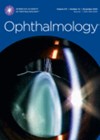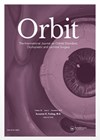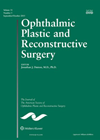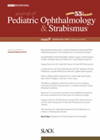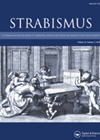
Journal Reviews archive for February 2021
Oculofacial plastic surgery – is antibiotic prophylaxis required?
This is a randomised, controlled, unmasked clinical trial evaluating whether topical antibiotic prophylaxis reduces the rate of infection after oculofacial plastic surgery compared to a non-antibiotic ointment. A total of 401 participants over the age of 18 were recruited, with...
Retroauricular myoperiosteal auto graft for orbital implant exposure
In this retrospective, observational study authors reviewed 27 eyes of 27 anophthalmic patients with implant exposure who had received a retroauricular myoperiosteal graft. Their main outcome measure was long-term coverage of implant and the secondary outcome was rate of post-surgical...
Orbital manifestations of granulomatosis with polyangitis
This a retrospective, observational study where authors looked at the ophthalmological examination, biopsy, antibodies and CT scan results of all patients diagnosed with granulomatosis with polyangitis (GPA) from January 2007-January 2019. Out of 101 patients with diagnosis of GPA, 15...
Aspirin and upper lid surgery
This is a double-blind randomised controlled trial of preoperative aspirin versus placebo in patients undergoing upper lid blepharoplasty or ptosis surgery. All enrolled patients were already taking aspirin and no other anti-platelet or anticoagulant drugs. All patients either had no...
BT for cyclic esotropia
This paper describes two patients with childhood cyclic esotropia treated with botulinum toxin (BT) and followed for eight and nine years. Onset was at two and four years of age. BT was injected under electromyography (EMG) guidance bilaterally to medial...
Idiopathic orbital pseudotumor as first sign of systemic inflammatory disease
The authors describe four children in whom idiopathic orbital pseudotumor (IOP) was the initial solitary finding with systemic inflammatory disease developing later. Four children were seen over a five-year period. Mean age was 9.75 years (2-14). Three were white and...
Ultra-widefield fundus autofluorescence
The authors assessed the ease and utility of ultra-widefield fundus autofluorescence (UWF-FAF) in detecting suspected inherited retinal disease in children who were difficult to examine. They aimed to assess the sensitivity of UWF-FAF and UWF-CF (colour fundus) photography and clinical...
Impact of amblyopia on adult planning and problem solving
This study sought to evaluate whether monocular amblyopia has an impact on planning and problem solving in the adult population. The authors used the Tower of London (TOL) test to address this question. The TOL test was developed to assess...
PI drops and respiratory change during surgery
Five percent povidone-iodine (PI) topical application to the eye has been observed to cause apnoea under general anaesthetic (GAS). The authors designed a randomised single-blinded controlled trial to evaluate changes in respiration caused by PI eye drops. They recruited 100...
Brain abnormality as risk factor for consecutive exotropia
The authors evaluated and compared the cerebral MRI findings in operated infantile esotropia cases with and without consecutive exotropia. This was a retrospective study of 28 patients. Group 1 had 17 cases of consecutive exotropia with a mean follow-up of...
Surgical outcome for cyclic strabismus
The aim of this study was to report the outcome of surgical treatment in a series of seven cases of paediatric cyclic strabismus. This was a retrospective study of children with surgical treatment for the manifest cyclic deviation. Six children...
Detecting muscle insertion position by ultrasound
The purpose of this study was to investigate the accuracy to locate muscle insertion positions before and after strabismus surgery using wide-field ultrasound biomicroscopy with the bag / balloon technique. Thirty-nine muscles of 22 adult patients aged 34.7 ±15.5 years...

